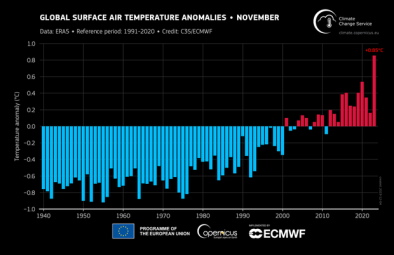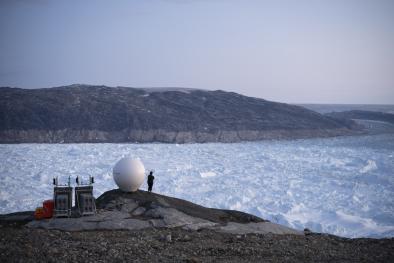Moscow crushes record for warmest winter as milestones are set across Europe and North America

Climate Signals Summary: Climate change is increasing temperatures in all seasons, and is leading to shorter and warmer winters, as well as earlier springs.
Article Excerpt: The meteorological winter of 2019-2020 shattered temperature records in Russia and France as well as other parts of Europe and the United States. In Moscow, this was the warmest winter in nearly 200 years of record-keeping, and the first winter there to have an average temperature at or above 32 degrees (0 Celsius).
The average winter temperature during the months of December, January and February in Moscow was 32.3 degrees (0.2 Celsius), which is 11.3 degrees (6.3 Celsius) above the 1981-2010 average, and shatters the previous record held by the winter of 1960-61 by an astonishing 3.5 degrees (2.8 Celsius), according to Etienne Kapikian of Meteo France, along with the Russian TASS news agency.
...
Data is still coming in, but it’s possible that Russia as a whole set a record its warmest winter yet as unusually mild conditions were seen in Siberia as well.
Other parts of Europe also missed out on winter.
In Helsinki, no snow fell in January or February for the first time on record, and just 0.2 centimeters fell during the entire winter. Not surprisingly, Finland saw record warmth for the season.
France as a whole had its warmest winter on record. According to Meteo France, the average temperature this winter was 4.86 degrees (2.7 Celsius) above average.
...
Numerous U.S. cities also had a top five warmest winter, particularly areas east of the Mississippi River, with well-below-average snowfall along the East Coast in particular. In Washington, through Monday, only 0.6 inches of snow accumulated for the winter, compared with the average of 15.4 inches.
The causes of the unusually mild winter were a one-two punch of an extreme weather pattern in the Arctic as well as global warming, which tilts the odds in favor of warm extremes. It’s often the case that when natural climate variability lines up with human-caused climate change, warm temperature extremes tend to result. This occurred when a strong El Niño event in 2015-2016 led to the planet’s warmest year since instrument records began.
...
It’s possible that the meteorological winter months set a record for the hottest such season on record in the Northern Hemisphere, given the unusually high temperatures that dominated a vast swath of real estate, from Vladivostok, Russia, to Paris and into the Lower 48 states.
The first indications of that will come this week, when the Copernicus Climate Change Service reveals its global temperature data.
Related Content






